Sensational Power Surge - Daylight Aurora (2012?)
science.nasa.gov/headlines/y2008/06may_carringtonflare.htm
The Largest Magnetic Storm on Record
The 'Carrington Event' of August 27th to September 7th, 1859
Recorded at Kew Observatory, London
Declination, or compass direction, (D) is the lower trace on each image and the horizontal force (H) is the upper trace. Universal Time is the time recorded here (astronomical) plus 12 hours and measured D precedes H by approximately 12 hours. For reference the marked ‘solar flare effect’, beginning at 23:15 recorded time on August 31st, is at 11:15 Universal Time on September 1st. It has been measured as 110 nT in H and 0.283 degrees in D.
Please note that these timings are approximate and should not be regarded as definitive. Also note, the size and scale of each image is only approximately similar, day-to-day. Some data have also been lost, either due to ink and paper degradation, or because the variations were so large they were off-scale.
You can also download all 12 full-size images as a poster (file size 23MB).
This is one example of the historical data contained in the British Geological Survey geomagnetic archives. We are currently re-examining our data holdings of old magnetograms and yearbooks in the hope of allowing greater access to these records in the future.
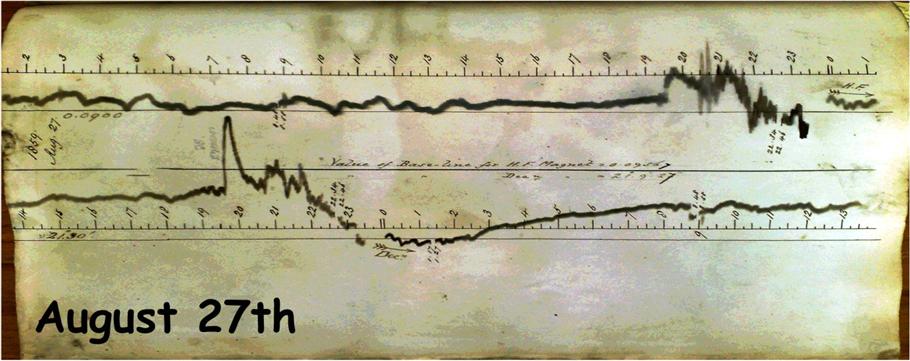 |
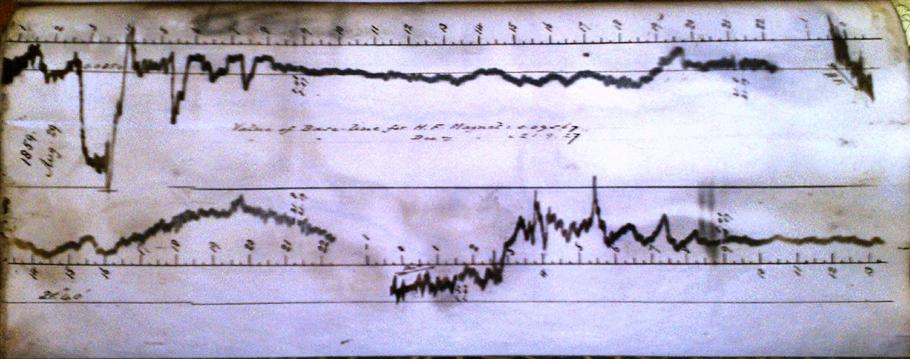 |
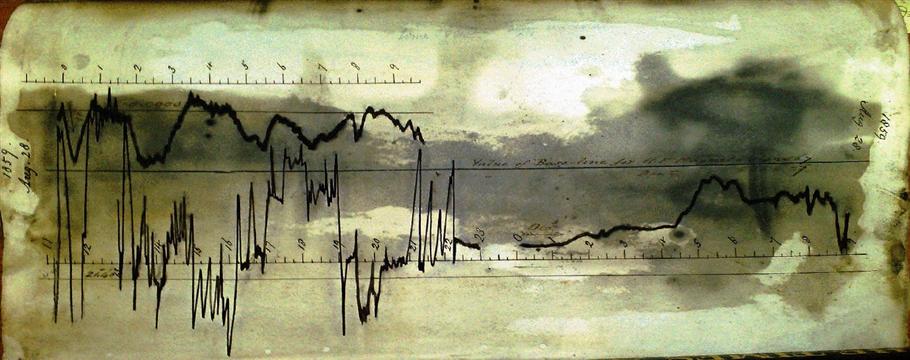 |
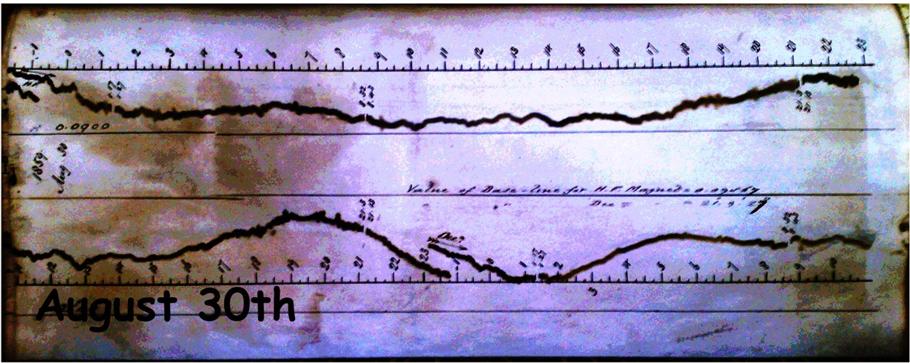 |
 |
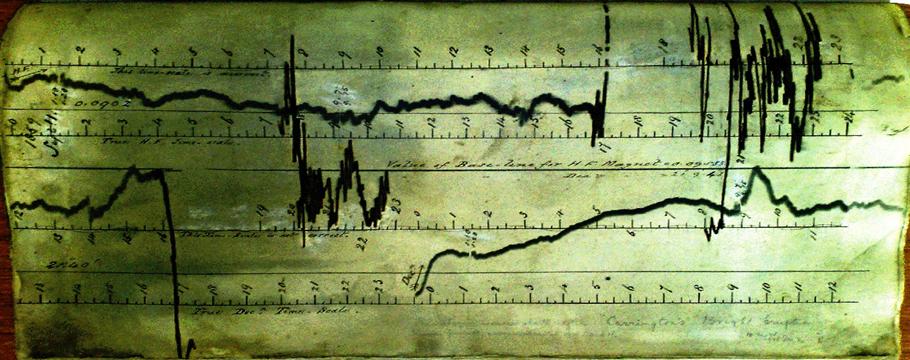 |
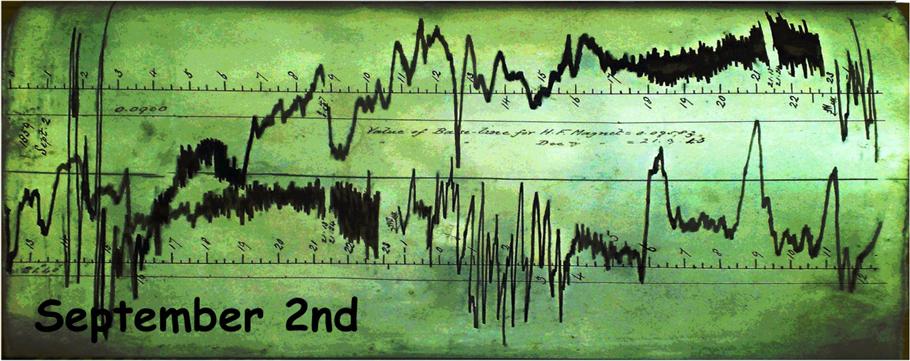 |
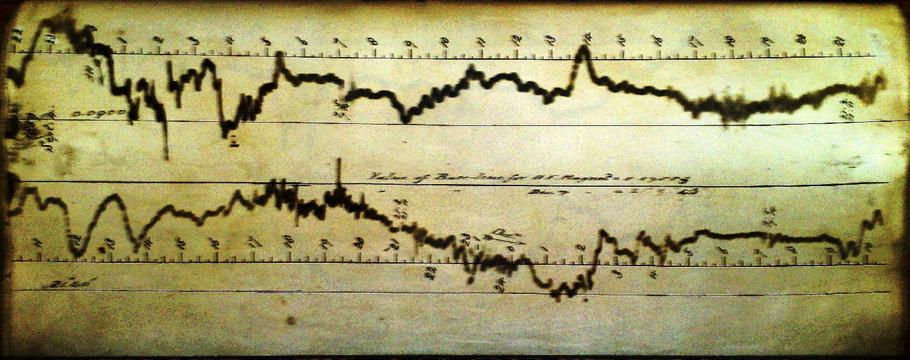 |
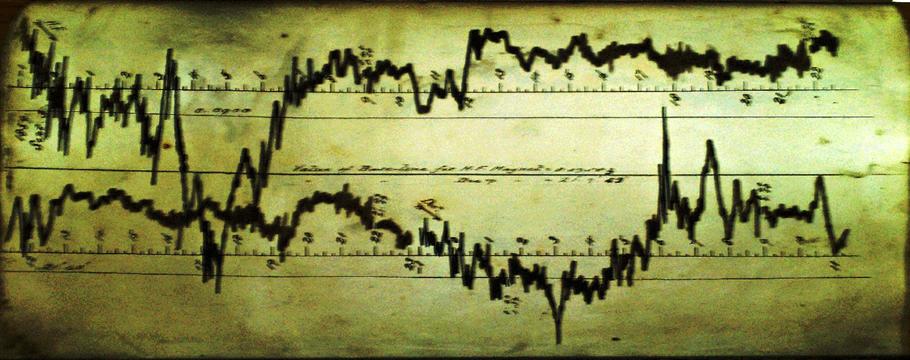 |
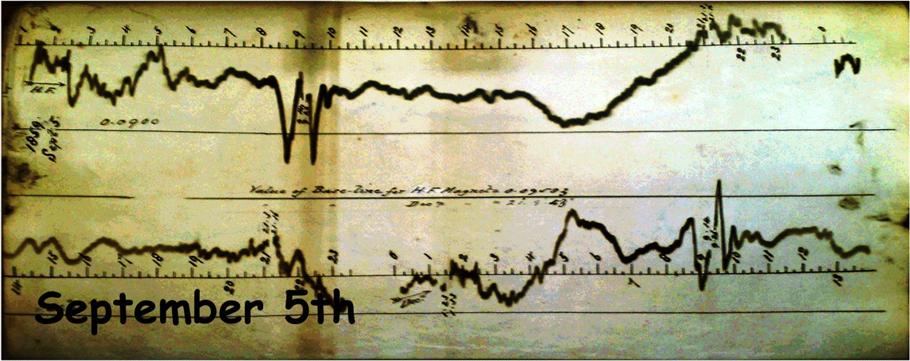 |
 |
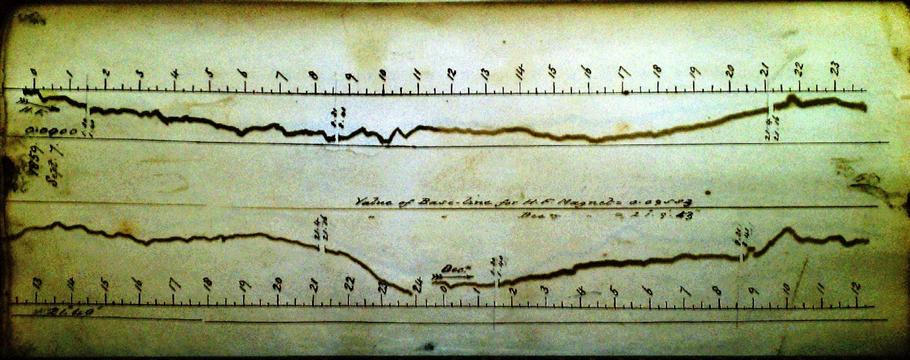 |
www.geomag.bgs.ac.uk/carrington.html
The March 1989 geomagnetic storm was a a severe geomagnetic storm that caused the collapse of the Hydro-Québec power grid.
The geomagnetic storm causing this event was itself the result of a Coronal Mass Ejection, ejected from the Sun on March 9, 1989.[1] 3.5 Days later, at 2:44 am on March 13, 1989, a severe geomagnetic storm, due to a coronal mass ejection from the Sun, struck Earth.[2][3] The storm began on Earth with extremely intense auroras at the poles, able to be seen as far south as Texas.[4] As this occurred during the cold war, many worried that a nuclear first-strike might be in progress.[4] Others considered the intense auroras to be associated with the Space Shuttle mission STS-29, which had been launched on March 13 at 9:57:00 AM. The burst caused short-wave radio interference, including the jamming of radio signals from Radio Free Europe into Russia. It was thought that the signals had been jammed by the Kremlin.
As midnight came and went, invisible electromagnetic forces were staging their own pitched battle in a vast arena bounded by the sky above and the rocky subterranean reaches of the Earth. A river of charged particles and electrons in the ionosphere flowed from west to east, inducing powerful electrical currents in the ground that surged into many natural nooks and crannies.[4]
Some satellites in polar orbits lost control for several hours. GOES weather satellite communications were interrupted causing weather images to be lost. NASA's TDRS-1 communication satellite recorded over 250 anomalies caused by the increased particles flows into its sensitive electronics.[4] The Space Shuttle Discovery was having its own mysterious problems. A sensor on one of the tanks supplying hydrogen to a fuel cell was showing unusually high pressure readings on March 13. The problem went away just as mysteriously after the solar storm subsided.
[edit] Blackout in Quebec
Fluctuations within the magnetic field of the storm caused geomagnetically induced currents (GICs) to flow through Quebec's power lines, which are direct current, instead of the alternating current carried by the power lines.[2] The insulating nature of the Canadian Shield igneous rock directed the GICs to the power lines. The conductors then forwarded this current to sensitive electrical transformers, which require a certain voltage amplitude and frequency to function properly. Although most GICs are relatively feeble, the nature of those currents destabilized the voltage of the power grid and current spikes erupted everywhere.[2]
Accordingly, protective measures were taken in response. To save the transformers and other electrical equipment, the power grid was taken out of commission, as circuit breakers tripped all over Quebec and shut off the power.[5] Within less than 90 seconds, this wave of breaking circuits left the entire transmission grid out of service. The collapsed power grid left six million people and the rest of Quebec without electricity for hours on a very cold night. Even though the blackout lasted around nine hours for most places, some locations were in the dark for days. This geomagnetic storm caused about C$10 million in damage to Hydro-Québec and tens of millions to the customers of the utility.[2]
[edit] Aftermath
In August 1989, another storm affected microchips, leading to a halt of all trading on Toronto's stock market.[6]
Since 1989, power companies in North America, the UK, Northern Europe and elsewhere evaluated the risks of geomagnetically induced currents (GIC) and developed mitigation strategies.[citation needed]
Since 1995, geomagnetic storms and solar flares have been monitored from the Solar and Heliospheric Observatory (SOHO) joint-NASA-European Space Agency satellite.
The solar storm of 1859, also known as the Solar Superstorm,[1] or the Carrington Event,[2] is the most powerful solar storm in recorded history.
From August 28 until September 2, numerous sunspots and solar flares were observed on the sun. Just before noon on September 1, the British astronomer, Richard Carrington, observed the largest flare,[3] which caused a massive coronal mass ejection (CME), to travel directly toward Earth, taking eighteen hours. This is remarkable because such a journey normally takes three to four days. It moved so quickly because an earlier CME had cleared its way.[4]
From the 1st to the 2nd, the largest recorded geomagnetic storm occurred, causing the failure of telegraph systems all over Europe and North America.[5] Auroras were seen all over the world, most notably over the Caribbean; also noteworthy were those over the Rocky Mountains that were so bright, the glow awoke gold miners, who began preparing breakfast because they thought it was morning.[3]
Ice cores show evidence that events of similar intensity has a reoccurs rate of 500 years. Since 1869, less severe storms have occurred in 1921 and 1960, when widespread radio disruption was reported.[3]
 Stumble It!
Stumble It!



0 Comments:
Post a Comment
<< Home